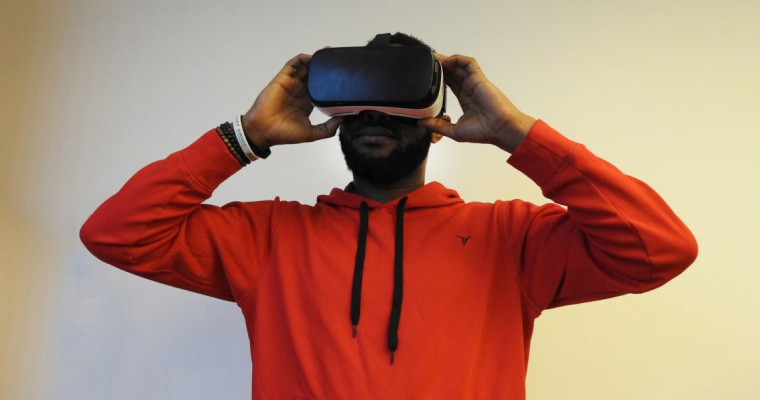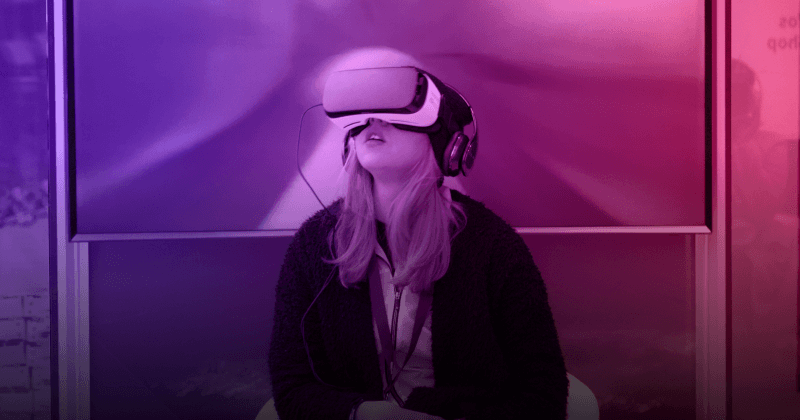The concept of virtual reality (VR) has captivated imaginations for decades, and with rapid technological advancements, it’s no longer science fiction. VR headsets are becoming more accessible, powerful, and sophisticated, blurring the lines between the physical and digital worlds. This begs the question: could VR be the next technological revolution, poised to dominate the way we live, work, and play?
A Gateway to New Experiences: VR’s potential applications are vast and transformative. Imagine attending a concert from the front row, exploring the depths of the ocean, or even visiting the moon – all from the comfort of your living room. VR can revolutionize education, allowing students to experience historical events firsthand or dissect virtual models in science class. It can be a powerful tool for training in various fields, from surgery to piloting airplanes, creating a safe and immersive learning environment.

The Power of Connection and Collaboration: VR can bridge geographical distances, fostering deeper connections and collaboration. Imagine attending virtual meetings with colleagues across the globe, feeling as if you’re all present in the same room. VR can also create shared experiences for geographically dispersed families and friends.
Challenges and Considerations: While the future of VR is undoubtedly exciting, there are challenges to address. Affordability and accessibility of VR technology need to improve for widespread adoption. Additionally, concerns regarding user health, privacy, and the potential for social isolation in a hyper-connected virtual world need to be carefully considered.
The Future Beckons: VR technology is still in its early stages, but its potential is undeniable. As VR continues to evolve, it has the power to reshape our world in profound ways. Whether VR will truly “rule the globe” remains to be seen, but one thing is certain: it’s a technology worth keeping a close eye on, as it prepares to usher in a new era of limitless possibilities.
Beyond Entertainment: While VR’s entertainment potential is undeniable, its applications extend far beyond gaming and blockbuster experiences. Here’s a glimpse into some of the groundbreaking possibilities:
Revolutionizing Healthcare: VR can be used for phobia treatment, exposing patients to their fears in a safe, controlled environment. It can also be a powerful tool for physical therapy, providing immersive rehabilitation experiences and pain management techniques. Imagine practicing surgery in a virtual operating room or conducting virtual consultations with patients from remote locations.
Transforming Retail: VR can reshape the shopping experience entirely. Imagine virtually trying on clothes in a variety of styles and colors, or exploring furniture arrangements in your own living room before making a purchase. VR showrooms can allow car dealerships to showcase their latest models from anywhere in the world, or real estate agents can offer immersive virtual tours of properties.
Redefining Education: VR can create interactive and engaging learning environments that transcend textbooks and traditional lectures. Students can explore historical landmarks in 360 degrees, dissect virtual specimens in biology class, or even travel virtually to different cultures and periods in history.
The Future of Work: VR can transform how we work. Architects and engineers can collaborate on 3D models of buildings in real-time, regardless of location. Remote workers can feel more connected and present by attending meetings in virtual conference rooms. VR training simulations can improve employee safety and efficiency in various industries.
The future of VR is brimming with possibilities, promising to change the way we interact with the world around us. It has the potential to break down geographical barriers, enhance learning, revolutionize industries, and even redefine how we approach healthcare and social interaction. As VR technology continues to develop, one thing is certain: the possibilities are truly limitless.





